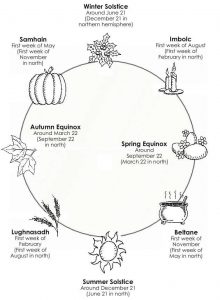 “The festivals of the Wheel of the Year are defined by the cycle of nature, by the dance of the weather gods and spirits of place. They require us to look not to the heavens but to the earth. They are set within our soul, watching the leaves on the trees, feeling the shifting temperature and the changing light, within and around.”
“The festivals of the Wheel of the Year are defined by the cycle of nature, by the dance of the weather gods and spirits of place. They require us to look not to the heavens but to the earth. They are set within our soul, watching the leaves on the trees, feeling the shifting temperature and the changing light, within and around.”
Emma Restall Orr, British druid priestess, ritualist and author
A powerful way to become more aware of your inner world is to harness the natural magic of the cycles of the seasons. The shifting energies of the earth’s turning have been celebrated and utilised for thousands of years, and even today, when we are so far removed from nature, you can still tangibly feel the introspection of winter, the crisp change of autumn, the potent energy of summer and the vibrant power of spring.
Attuning yourself to the vibrations of the eight sacred festivals that make up the enchanted Wheel of the Year will fill you with strength, magic and a sense of grand possibility and potential. You’ll become more in sync with your inner self and your intuition, and start to connect with your own emotional tides as you connect with the earth’s.
These special days, determined by the position of the earth in relation to the sun, mark the beginning, midpoint and end of each season, and are measured today by astronomers and scientists. In the past they were calculated by druids, the philosophers and scientists of their age, and recorded in stone circles and cairns. They have been honoured for thousands of years in cultures throughout the world, so the imprint of their energy can be tapped in to and absorbed.
Long ago, when life revolved around agriculture, and the sun and moon were considered deities to be worshipped, the Celtic peoples of Europe, and many others around the globe, were in tune with nature. They had to know when each season began and how long it would last so they could plant and harvest crops, hunt migratory prey and prepare for the harsh winters. They divided their year by seasons, not months, and honoured each change, celebrating eight festivals that marked the turning of these seasons and the cycles of the earth.
There are four astronomical and four agricultural festivals. The astronomical celebrations are determined by the position of the earth in relation to the sun. These include the spring and autumn equinoxes (Latin for “equal night”), which occur when the sun is directly above the equator and the length of day and night is equal, and the summer and winter solstices (Latin for “sun stand still”), which occur when the sun is at its northern or southernmost extreme, the furthest it ever gets from the equator. These four events are the midpoint of each season – thus the summer solstice being referred to as Midsummer’s Day and the winter solstice as Midwinter.
The agricultural celebrations are known as cross-quarter days, because they fall midway between the astronomical festivals. Traditionally they were tied to agricultural events such as the sowing and harvesting of crops, and they mark the beginning of each season.
Even today, when we no longer live in harmony with the earth’s rhythms or agricultural cycles, people celebrate the Wheel of the Year as an honouring of nature and an acknowledgement of the continuing cycle of life, death and rebirth, both literally and symbolically.
Literally this refers to the changing seasons – the fertility and vibrant life force of summer, the harvest energy of autumn, the introspection and endings (death) of winter, and the rebirth of spring. Mythologically it was tied to the story of the god and goddess. At the spring equinox they meet and court, before consummating their love during the rites of Beltane. At the summer solstice the goddess blooms into the mother, pregnant with new life, and the sun god reaches his energetic peak. From then he weakens through the harvest time of Lughnasadh and the autumn equinox, before going to the underworld at Samhain to learn new wisdom, then being reborn at the winter solstice when the goddess gives birth to the infant sun god and the Wheel turns again, playing out the cycle on and on through time.
Once this creation story was accepted as fact. Today some still think of it as a literal retelling of a historical truth, while others feel it’s simply a parable that humanises nature. Either way, it’s now the symbolic meaning that’s most relevant to our lives – planting the seeds of our dreams in the metaphorical spring, watching them grow and manifest in the world before we give thanks for our literal harvest, allow the things that no longer serve us to die off or be released, then start all over again with new dreams as we celebrate our own rebirth.
Becoming aware of the seasonal shifts and the patterns of nature wherever you live, and celebrating these ancient but still relevant festivals, is a simple way to tap in to the magic of the earth and start to connect with nature and your inner self.
Channelling this energy and creating meaningful rituals in your life doesn’t conflict with any religion or require a belief system, as it’s a celebration of the science of nature and the cycles of the planet. Many pagans, like Rose and her friends, do call on gods and goddesses, and have a personal concept of the divine as a universal creative force, but others don’t believe in any form of deity, simply revering nature as sacred and as the source of life, and believing that divinity is an inner not an outer power, an energy within themselves and every other person alive.
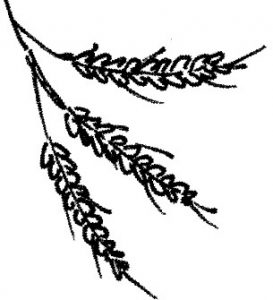 Lughnasadh : First Day of Autumn : Gratitude
Lughnasadh : First Day of Autumn : Gratitude
Lughnasadh, also known as Lammas, is celebrated in the first week of August in the northern hemisphere and the first week of February in the southern hemisphere, and marks the end of summer and the beginning of autumn. It’s the first harvest festival, traditionally a time of feasting and of thanksgiving for the life-giving properties of the grain and nature’s bounty, as well as a recognition of the cycle of sowing and reaping of the crops.
It is also the time to honour the things you have grown and created in your life, a day to harvest the fruits of your labours and acknowledge your successes and what you’ve achieved in the past year. Celebrate the goals you’ve reached and have your own festival of gratitude, in whatever form that takes. Toast your success, throw a party or do something special to mark the occasion – maybe reward yourself for your hard work with a gift you’ve long wanted, or some precious time off to rest and chill out. Make a list of all the things you’ve gained over the past year – the gifts you’ve been given, the new talents you’ve developed, the friends you’ve made, the experiences you’ve had, the healings you’ve received – and give thanks for it all.
Then, out of gratitude and in the spirit of the ancestors who shared the bounty of their harvest with those less well off, pay your good fortune forward. Donate to a local charity or collect food for the homeless, as Rose and her friends do, lend to a business in the developing world, or give your time to help someone, ensuring the energy of abundance continues and is strengthened. Give joyfully, with no expectation of receiving anything in return. And work out small ways in which you can make a difference to the people around you all year long as well.
As the energy begins to subtly slow, this is also a time to be patient and to trust that everything is as it should be, because there are still harvests to come. Not everything has to be achieved right now – some things take longer to manifest. The lesson of the Wheel of the Year is that everything continues, everything happens when it should, and everything is eternal.
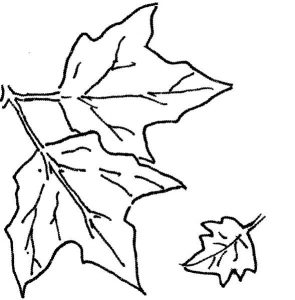 Mabon : Autumn Equinox : Harvest
Mabon : Autumn Equinox : Harvest
The autumn equinox, known as Mabon and celebrated on September 22/23 in the northern hemisphere and March 20/21 in the southern, is characterised by the length of day and night being equal as the sun travels back across the equator to the other hemisphere. From this point on, the days will become shorter and cooler, but this is a moment of balance in nature and within – a point of harmony and calm.
Vibrationally Mabon is a season of withdrawal, of being alone to meditate, recharge, reassess and ponder where you’re at in life. The energy of the earth retreats and goes within, as does your personal power, but from this cycle you will emerge with immense strength and wisdom. It’s a time to honour your achievements, experiences and growth, and to ensure balance by integrating all parts of your self. Acknowledge and celebrate what you’ve reaped in your own life. Feel fulfilment from each goal reached, releasing what no longer serves you in order to move forward. In the wild, old growth is cleared. In your life, cut out anything that’s holding you back or preventing new life and love from flourishing, whether it’s work, people, a belief system, regret or the past.
On this day, when all is balanced, witches traditionally renewed their magical commitments, and you can renew any vows you’ve made or pledge a new one, be it to do with magic, love, friendship, career or anything else. As the shadows lengthen, it’s also a good time to scry for insight into your future. If you can, light a fire and stare into the flames, allowing your mind to go blank and your vision to blur a little, or go outside and watch the clouds scuttling across the sky, analysing the shapes and symbols you see within flame and cloud. Without over-thinking it, write down what they mean to you.
Pyromancy (fire reading) and nephomancy (cloud reading) are forms of divination that have been used for millennia. You should develop your own dictionary of symbols, as you know better than anyone what any shape or image means to you, but you can begin with standard readings, such as a heart indicating romance, a cat referring to a need to trust your intuition, a tree meaning you will make new friends and a plane foreshadowing travel.
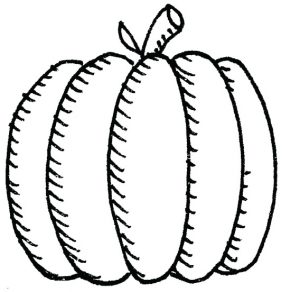 Samhain : First Day of Winter : Death
Samhain : First Day of Winter : Death
Samhain, which is celebrated in early November in the northern hemisphere and early May in the southern, is a cross-quarter day marking the end of autumn and the beginning of the cold and dark of winter. Symbolically it is about rest and renewal, of preparing for what’s ahead and withdrawing a little to conserve your energy, and releasing the things you’ve been holding on to in order to ready yourself for new challenges and experiences. It’s also the night when the veil between the worlds is said to be at its thinnest, when people honour their ancestors and try to commune with the dead. Some set a place at the dinner table for any loved ones passed over, as Rhiannon’s dad Mike did at their Feast of the Dead ritual, while others cast spells to bring their spirit back, or perform mediumship rituals to converse. This magical time and its purpose has been conserved in modern-day Halloween, which celebrates ghosts, witches and restless spirits.
The beginning of winter is a period of reflection, so spend time in contemplation. If you’ve lost someone close to you, light a candle and remember them. Look at photos or letters and feel their presence with you. This shouldn’t be morbid – you’re celebrating their life and all they meant to you. Also honour those who are here now. Call your mum and dad, visit your grandparents, or write to someone who meant a lot to you when you were growing up and thank them.
Long ago, Samhain was the end of one year and the start of the next, so it’s also a powerful time to let go of the energy of the old year and old memories so you can move forward with lightness and strength. Light another candle, and by its flickering illumination, write out all the worries, frustrations, regrets and seeming failures you’ve held on to over the previous twelve months. See the candle flame burning them away and leaving you purified and refreshed, and breathe in this positive new energy. Then burn the list in the flame, releasing your attachment to those emotions and their power over you.
This is the time to prepare yourself for the rebirth you’ll experience at Yule, but for that to happen there must be death – the death of fears and doubts, and anything holding you back.
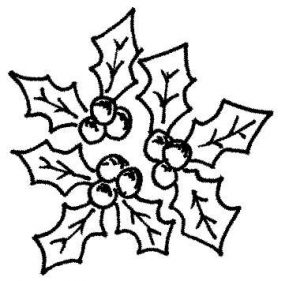 Yule : Winter Solstice : Rebirth
Yule : Winter Solstice : Rebirth
The winter solstice, known to pagans as Yule and Midwinter, falls around December 21/22 in the northern hemisphere and June 21/22 in the southern, and marks the middle of winter. It’s the shortest day and the longest night of the year, and marks the transition between dark and light, both emotionally and physically. It’s the lowest point of the Wheel in terms of daylight and energy, with the sun rising later and night falling earlier. The land is barren and cold, there is less light, and energetically people feel tired and unmotivated.
Winter is a time to rest and reflect, to acknowledge sadness and loss – of dreams, of friendships, of parts of your self – and conserve your energy. But the solstice is the turning point in this time of darkness, introspection and dreaming. Considered the dark night of the soul, it also marks the period when the dark half of the year relinquishes its hold to the light half. From this time forward, the days will start to lengthen, the sun will become stronger, and the energy within and without will start to increase and build.
In pagan times an evergreen tree was brought inside as a symbol of the hope of spring’s return, and Yule was a time of feasting, celebration and gift-giving in honour of the birth of the sun god – traditions that live on today in the Christmas tree we decorate, the presents we put under it, the huge family meal we cook, and the celebration of the birth of the son of God.
To attune yourself to this festival of rebirth, light a candle on solstice eve to symbolise the sun and its activating energy, and list your dreams for the coming year. Traditionally people stayed up all night to await the return of the light, but if you can’t do that, get up for the sunrise to toast the dawn and give thanks for this energetic reawakening. Open yourself to the promise of new growth and achievement, and the rebirth of your own self and your creativity, as the sun is also reborn. Symbolically and energetically it’s a time to honour your inner wisdom, consider the lessons you learned during winter’s introspection, and integrate them into your life so you can start to initiate change and prepare for the rush of growth of the coming springtime.
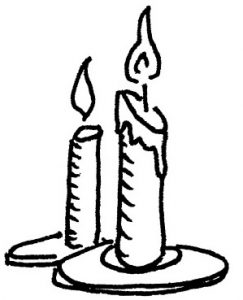 Imbolc : First Day of Spring : Purification
Imbolc : First Day of Spring : Purification
Imbolc, which is celebrated in the first week of February in the northern hemisphere and the first week of August in the southern, is a cross-quarter day marking the end of winter and the start of spring. It celebrates the return of light to the land, and to our own hearts, and is a time of hope, renewal and fresh starts after winter’s sluggishness.
Energetically it’s a time of awakening, rebirth and re-emergence. Nature fills with life force and begins to quiver with the energy to grow again, and we start to emerge from the chill of winter, shaking off our lack of motivation and re-engaging with the world, making it a great day to sow the seeds of what you want to achieve in the coming year.
Imbolc is dedicated to Bridie, the goddess of inspiration, creativity and fire, who was later supplanted by Saint Bridget, whose festival is also celebrated at this time. Talk to Bridie – or Bridget, or the higher-self aspect of yourself – or write her a letter, and tell her what you want to create in the next twelve months. Meditate on your goals and what you hope to achieve. Don’t worry about how to do it, as that will be revealed later in flashes of inspiration, guidance or outside help.
Physically it’s a time of purification and cleansing after the long dark of winter, so clean your house and clear your space, sweeping out old energy and thoughts so the new can thrive. It’s a good time to write about your beliefs and examine how you feel about your spiritual path too, exploring the reasons you think the way you do and perhaps questioning if there are other viewpoints you might also embrace. It’s also about new beginnings, and in some magical traditions it is the day chosen for initiations and rededications, so if you want to make a pledge to a new path or a new goal, or a personal vow of any kind, you will be supported by the energy of the season.
You may like to ignite a candle to represent the coming back of the light and do some candle magic. Stare into the flame as you concentrate on what you want, then blow it out, sending your desire out to the universe. Making a wish as you blow out the candles on your birthday cake is a magic that has survived from pagan times, and is a potent way to manifest your wishes into reality, whatever day it is.
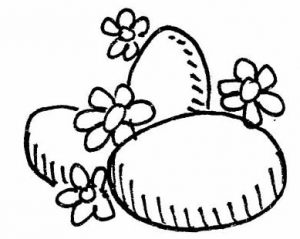 Ostara : Spring Equinox : Blossoming
Ostara : Spring Equinox : Blossoming
The spring or vernal equinox, known to pagans as Ostara, is celebrated around March 20/21 in the northern hemisphere and September 22/23 in the southern. It’s one of only two times in the year when the length of day and night is equal, as the sun sits directly above the equator on its journey north or south, creating equal light and dark in both hemispheres.
This equinox is about growth, passion and the unfurling and release of the immense potential you have within you. On both a universal and a personal level, it’s a time of balance and harmony, of union between the physical and the spiritual, and the integration of your heart and soul. This can be harnessed to anchor your dreams in reality and enhance your own inner harmony as the balance of universal outer energies is reflected within. Relationships are harmonious now too, making it a good time for weddings and for healing rifts.
It’s a time of growth and fertility, when new crops are sown, new shoots break through the earth, buds on the trees open, birds build nests and lay eggs, and new life is celebrated. Thanks was traditionally given to the fertility goddess Ostara, whose symbols were an egg and a hare, and who is still honoured around the world today, albeit unknowingly, in the form of chocolate eggs and the Easter bunny.
Energetically it’s also a very fertile time, as the seeds you sowed of your goals at Imbolc begin to sprout and gain momentum. Paint some hard-boiled eggs with symbols that represent your desires, or buy or make the chocolate version, meditating on your own metaphorical fertility and your ability to manifest dreams into reality. Choose an affirmation relating to your desired outcome, write it down and pin it up where you’ll be able to see it every day.
Go outside during the day and breathe in the fresh spring air, filling your heart with new inspiration as you fill your lungs with oxygen. In many ancient cultures, including the Roman one whose calendar we have based ours upon, the spring equinox was the first day of the year, and the sense of new hope and optimism reflected in this time remains today. It’s a celebration of new life, hope, passion, growth and energy.
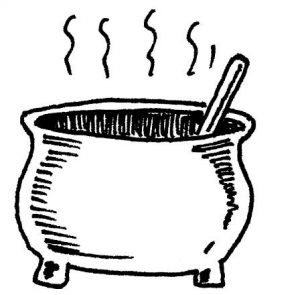 Beltane : First Day of Summer : Growth
Beltane : First Day of Summer : Growth
Beltane, celebrated in early May in the northern hemisphere and early November in the southern, is a cross-quarter day marking the end of spring and the start of the heat and energy of summer. Evidence of new life is everywhere, in abundant blossoms, the hatching of birds and bees pollinating flowers, showing that time is moving forward and life is progressing. Women bathed their faces in the dew gathered from their garden on Beltane morning to harness the energy of youth, and flowers were brought inside to symbolise fresh beginnings and the power of nature.
Beltane was the major fertility festival. Handfasting rituals were conducted, and lovers leaped over bonfires then came together in sacred union in the fields to bless the crops with fertility. Maypole dancing, representing the union of the god (the pole) and the goddess (the ribbons), was performed to join the forces of masculine and feminine, and May Day remains a popular day to wed in the northern hemisphere. It’s a time of lovers and spells to attract love, and celebrating the fertility of life, not just physically, but also of your dreams and ambitions.
Symbolically this day marks the igniting of the fires of creativity and passion, of the fertility of your dreams being made manifest, and is the time to take steps to achieve what you want. Check in on the projects you started at Ostara, and write about their progress and the ways in which they’ve sprouted into reality. If you need to fine tune anything, learn a new skill or let go of one aspect so it can germinate further on its own, the energy of this day will support you. Make a commitment to yourself – start a new project, apply for a new job or take up a new hobby, knowing the universe is bursting with raw energy and power that you can tap in to.
It’s also a powerful time to repledge your love to your partner. You don’t have to build a bonfire and leap over it, although you can! Simply lighting a red or gold candle as you stare into each other’s eyes and speak your love and commitment will invoke the power and passion of the element of fire. If you’re single, make a commitment of some kind to yourself, nurture a friendship, or if you seek love, sing your intention and wanting of a romantic partner to the universe.
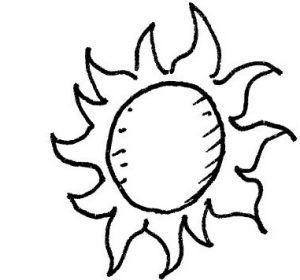 Litha : Summer Solstice : Fruition
Litha : Summer Solstice : Fruition
The summer solstice, known to pagans as Litha, is celebrated around June 20/21 in the northern hemisphere and December 21/22 in the southern. It’s the longest day and the shortest night of the year, and marks the peak of energy and solar power for the year. On this day the sun reaches its northern or southernmost latitude before it turns and heads back towards the equator, so near the poles daylight lasts for twenty-four hours – the sun just doesn’t set for weeks at a time. In nature, everything is ripe and abundant, and life is blooming.
It’s a time of high, hot and active energy. Creativity and expression is at a peak, so stand in your power and express your needs, saying what you want rather than assuming that people know. Whereas the winter solstice is slow and introspective, its opposite is fast and effective. Make use of the active energy – this is a time to do, to get out there and harness the energising earth power and make things happen.
Follow your passion, take a chance, say yes to new opportunities and express your creativity and your inner self. This is not the time to be withdrawn or shy, it’s for getting out amongst it and making your dreams come true. It’s also a time when relationships – and you – will mature, and you’ll apply new wisdom and forethought to your passion, so give thanks for the lessons you’ve learned, and allow the person you are maturing into to unfold.
It’s a time of celebration too, of acknowledging how far you’ve come and what you’ve achieved. Enjoy the happiness and abundance of this season and soak up the sunshine and festive atmosphere. Traditionally people stayed up all night on solstice eve, partying around bonfires or within sacred circles of stone, then watched the sun rise the next morning, feeling it bathe them in warmth and light.
At dawn, stand with your arms outstretched and breathe in the sun’s life-giving power. Let it wash over you with its healing energy and burn away anything you no longer need. Take note of how your dreams and goals are manifesting into the world, and meditate on anything that could be blocking your progress. Be open to letting go of whatever isn’t working so you can move forward in a new direction.
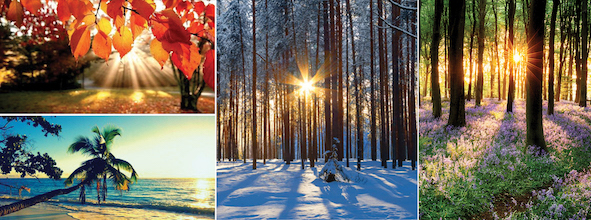


Get Social